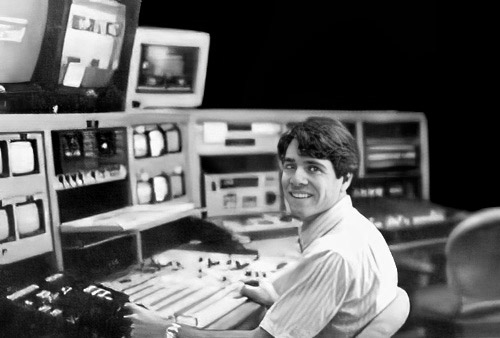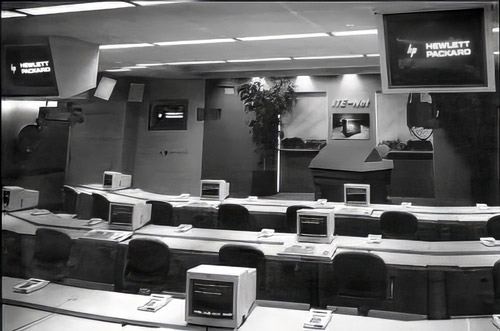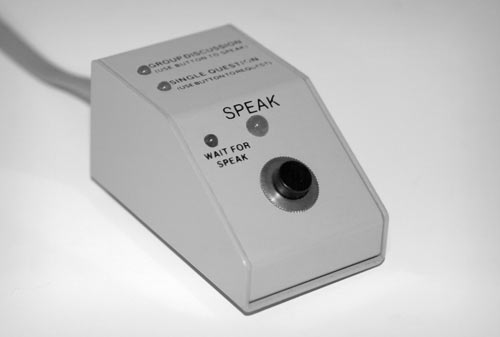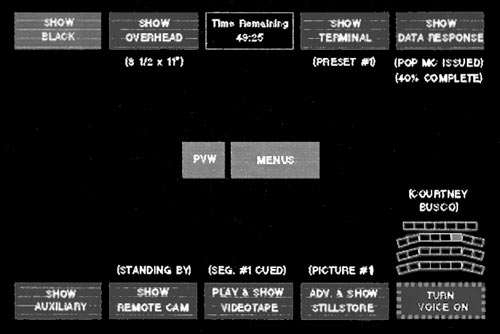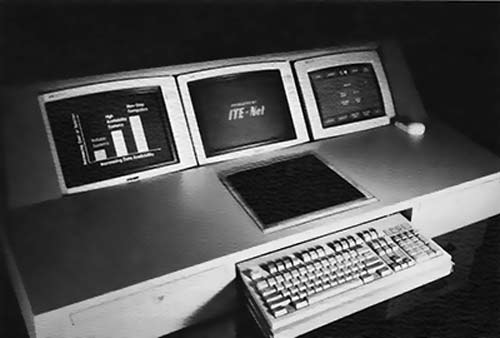|
my career and stuff |
|
|
While operating Feature Video, Hewlett Packard's computer division contacted me for an interview. It turns out they didn't want my production services, but were looking for a TV producer and engineer to operate a new facility in Cupertino California. I took the job and entered into systems and software design. HP was one of the first to use television to deliver live training to employees around the world. They operated a private satellite network and had a large TV studio at corporate headquarters in Palo Alto. But the computer division was preparing to roll out a new line of computers, and needed it's own capabilities to produce and broadcast live training to all its field engineers. I began working with HPTV, vendors and internal customers to lay out the facility, oversee its construction, and begin production.
The Cupertino "Teleclass" facility was a 31 seat classroom, outfitted so that classes would be broadcast to a worldwide virtual classroom of hundreds or thousands. The system was high quality, with five remote pan/tilt cameras, video switcher, audio desk, computer graphics and equipment room. The studio had the specialty labor requirements to be expected, and that was a cost issue. Management had hoped to man a facility with one person, namely myself. This would not be possible. In fact, the studio's maiden program took a team of seven to produce.
I thought the labor requirements could be improved considerably and decided to prove it. I proposed an automated solution and got approval to implement it. I designed a PC-based system to take over repetitive tasks like opening student microphones, aiming cameras, advancing slides, rolling tape, and switching video. The microphone queuing and camera automation were powerful and cost effective. There were remote pan-tilt cameras at the front of the studio. Students would signal their desire to ask a question by pushing buttons I had built and placed at each desk.
The system aimed the robotic cameras to each speaking student, in leap-frog succession, so that after one question was answered, the next shot was ready to take. The instructor was shown which student to address via a graphical display at the lectern. The instructor could also randomly select students for unprompted questions, and cameras and microphones were controlled automatically. The system reduced production crew requirements by four to five people.
The project was successful and rewardng. From raiding surplus HP lab equipment, reverse-engineering control protocols, building custom hardware, designing user-interfaces, hiring software developers, and conducting usability analysis, I had a hands-on education in system and software engineering. I delivered a system that was highlighted as leading edge within the company and the industry.
While I was completing the studio automation project, management was concerned with the broader challenge of training remotely, and how the effectiveness of such "distance learning" could be improved. The primary shortcoming of the form of education was its lack of the interactivity between students and teacher, interactivity commonplace in the traditional classroom. I saw this as an opportunity to create another innovative solution. I proposed to build a Student Response System that would connect students, regardless of their location, back to the instructor. Students would be able to verbally ask the instructor questions, and the instructor would be able to poll and quiz students in order to stimulate and monitor learning. I began designing this system, and then joined the firm I hired to build it. Together we productized the solution and became the company One Touch Systems. |
|
